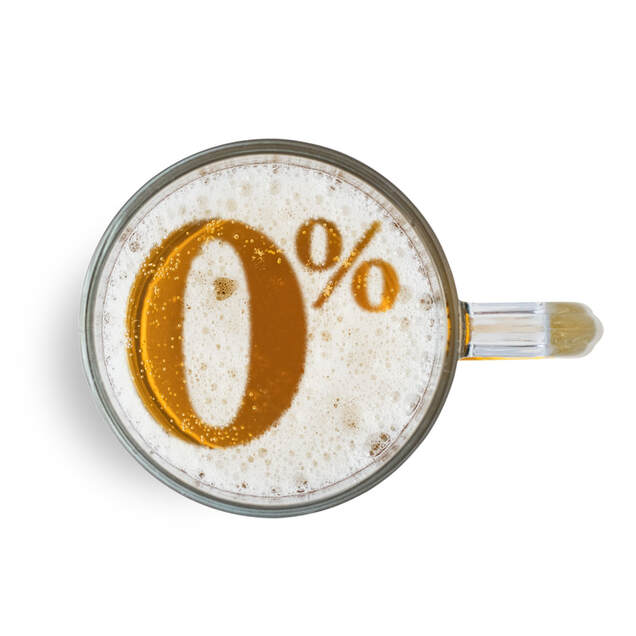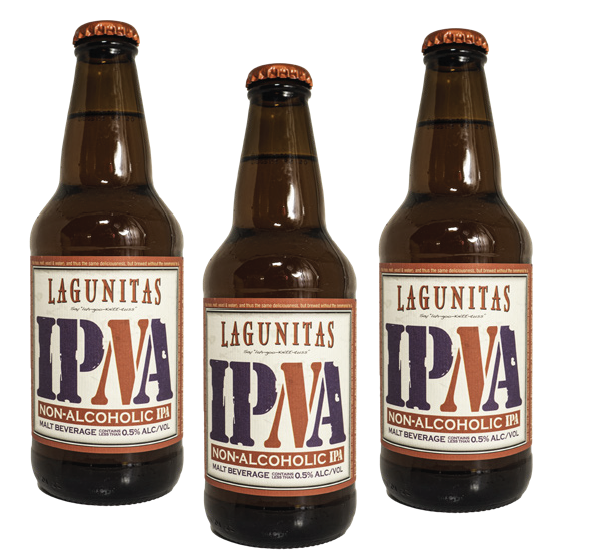- Subscribe
- Digital Edition
-
Beverage Guide
- Flavor and Cocktail Construction >
- Production Fundamentals >
- Non-Alcoholic Beverages >
-
Beer
>
- Cider >
- Sake
-
Spirits
>
-
Wine
>
- Kamaʻāina Wine Makers >
-
Winemaking
>
- A Guide to: High Sugar Residual Wines
- A Guide to: Post Fermentation Flavor Adjustments
- A Guide to: Post Fermentation Process: Stabilization
- A Guide to: Wine Prefermentation Practices
- A Guide to: Wine Microbes
- A Guide to: Wine Alcoholic Fermentation Physical Environment
- A Guide to: Wine Fermentation Chemical Environment
- A Guide to: Wine Bottling
- A Guide to: Wine Faults
- A Guide to: Wine Polyphenols
- A Guide to: Wine Aroma Compounds: Pt 1
- A Guide to: Wine Aroma Compounds: Pt 2
- A Guide to Viticulture
- Red and White Grape Aroma Compounds
- Wine Styles >
- Business Strategy
- News and Events
- About
- Production Fundamentals
- Flower Aroma Compounds
Wine
General Flavor Perspective
• Non-alcoholic wines made by reverse osmosis or spinning cone column (SCC), while having decent retention of core wine aromas, are limited to replicating budget wines that are not particularly complex or aromatic. This is most likely due to limitations in the chemistry of a food-safe alternative compound or compounds that replicate ethanol’s aromatic and chemical properties.
• Red wine works better than white wine, due to its polyphenols helping to create mouthfeel and supplement the sensation of drinking wine, whereas the missing aroma compounds in white wine, which relies on esters, is much more obvious.
• As wine contains 10-18% ABV, ethanol makes up a significantly larger percentage of flavor in wine than in beer.
Additionally, the concentration of aroma compounds like ethyl esters that only exist because of a carboxylic acid condensing with ethanol, are fewer because of the decreased precursor.
Influence of Production Methodology
• When comparing SCC to Reverse Osmosis (RO), neither wine production technique seems to be “better” or “more wine-like” than the other. This might be because both techniques add natural flavors, probably the addition of the aromatic fraction and other supplementary aroma compounds. With that said, the add-backs are more dictated by a producer’s preference than a technique limitation.
• The differences, from a practical perspective, may be more related to operating costs, as our understanding is that SCC for a winery might be more cost-effective for the producer. The final bottle cost, however, may be comparable depending on the particular producer's desired margins.
Usage Perspective
On-premise
Great in situations where wine is being consumed but not carefully studied due to the loss in complex aromatics. For example, in a social situation where conversation or another activity like dancing is the primary focus, non-alcoholic wine is a good substitute for alcoholic wine. As non-alcoholic wine is being introduced to consumers, on-premise consumption may be more successful than off-premise consumption. This can change once the product is better understood.
Off-premise
The pricing strategy can be challenging, due to non-alcoholic wine tasting like a much cheaper alcoholic beverage. The price is really the reflection of having to make alcoholic wine, then adding on cost to remove the alcohol. Additionally, the consumer may over-expect and the product may under-deliver in terms of flavor complexity due to this additional cost. However, retail personnel with adequate sales training can help manage these expectations and help their customers understand the limitations and ideal usage scenarios of non-alcoholic wines.
Other Notes
The wine, when stored refrigerated, must be consumed within three days before the flavor changes significantly.
Brand Perspective for the Hawaii Market
In reviewing the various non-alcoholic wine offerings, and samplings with various people, each brand is different in flavor profile and lends itself to different occasions, as well as personal preferences.
• J Lohr’s Ariel’s Cabernet Sauvignon and Chardonnay offerings push the oak harder than the other offerings, but is not overly oaky.
• FRE is the most diverse line, with multiple offerings across the board, and includes sparkling wine versions.
• Hand on Heart’s offerings are food-oriented, due to the larger flavors. The technical limitation is that without ethanol, the creation of these large flavors requires pairing with food otherwise it can be too robust for some if consumed by itself.
• Non-alcoholic wines made by reverse osmosis or spinning cone column (SCC), while having decent retention of core wine aromas, are limited to replicating budget wines that are not particularly complex or aromatic. This is most likely due to limitations in the chemistry of a food-safe alternative compound or compounds that replicate ethanol’s aromatic and chemical properties.
• Red wine works better than white wine, due to its polyphenols helping to create mouthfeel and supplement the sensation of drinking wine, whereas the missing aroma compounds in white wine, which relies on esters, is much more obvious.
• As wine contains 10-18% ABV, ethanol makes up a significantly larger percentage of flavor in wine than in beer.
Additionally, the concentration of aroma compounds like ethyl esters that only exist because of a carboxylic acid condensing with ethanol, are fewer because of the decreased precursor.
Influence of Production Methodology
• When comparing SCC to Reverse Osmosis (RO), neither wine production technique seems to be “better” or “more wine-like” than the other. This might be because both techniques add natural flavors, probably the addition of the aromatic fraction and other supplementary aroma compounds. With that said, the add-backs are more dictated by a producer’s preference than a technique limitation.
• The differences, from a practical perspective, may be more related to operating costs, as our understanding is that SCC for a winery might be more cost-effective for the producer. The final bottle cost, however, may be comparable depending on the particular producer's desired margins.
Usage Perspective
On-premise
Great in situations where wine is being consumed but not carefully studied due to the loss in complex aromatics. For example, in a social situation where conversation or another activity like dancing is the primary focus, non-alcoholic wine is a good substitute for alcoholic wine. As non-alcoholic wine is being introduced to consumers, on-premise consumption may be more successful than off-premise consumption. This can change once the product is better understood.
Off-premise
The pricing strategy can be challenging, due to non-alcoholic wine tasting like a much cheaper alcoholic beverage. The price is really the reflection of having to make alcoholic wine, then adding on cost to remove the alcohol. Additionally, the consumer may over-expect and the product may under-deliver in terms of flavor complexity due to this additional cost. However, retail personnel with adequate sales training can help manage these expectations and help their customers understand the limitations and ideal usage scenarios of non-alcoholic wines.
Other Notes
The wine, when stored refrigerated, must be consumed within three days before the flavor changes significantly.
Brand Perspective for the Hawaii Market
In reviewing the various non-alcoholic wine offerings, and samplings with various people, each brand is different in flavor profile and lends itself to different occasions, as well as personal preferences.
• J Lohr’s Ariel’s Cabernet Sauvignon and Chardonnay offerings push the oak harder than the other offerings, but is not overly oaky.
• FRE is the most diverse line, with multiple offerings across the board, and includes sparkling wine versions.
• Hand on Heart’s offerings are food-oriented, due to the larger flavors. The technical limitation is that without ethanol, the creation of these large flavors requires pairing with food otherwise it can be too robust for some if consumed by itself.
Beer
General Flavor Perspective
Non-alcoholic beers developed within the past 10 years are much better than those developed prior to that. This is due to advancements in hop technology, including hop oils and CO2 extraction, and advancements in flavor technology. However, there are style limitations which are dictated by current chemistry. These limitations will be discussed in the following section.
Influence of Production Methodology
Determining the precision production methodology used for a commercial non-alcoholic beer is challenging, because it is typically proprietary to the brand. Additionally, there can be a blend of methodologies. However, based on our tasting notes, we can make some generalizations.
• Dealcoholization: Dealcoholization by vacuum distillation is the primary method used to produce mass-market brands like Heineken and Guinness. The utilization of “natural flavors” on the packaging may refer to the higher alcohols and esters that were recovered and then added back into the beer. However, it can also refer to naturally-derived supplementary esters and aromatics that are being replaced as would be the case in using a WONF (with other natural flavor) label.
• Arrested fermentation lends itself to better mouthfeel than dealcoholized beer. When used to make an IPA, it can better recreate the taste sensations of an alcoholic beer.
Influence of Beer Style
Light beer and Pilsner beers
• Vacuum distillation, while removing many esters and higher alcohols, is not as big an issue, as these beers aren’t overly complex to begin with. The re-addition of the aromatic fraction and other aromas, including hops, are sufficient at filling in any missing aromas.
• Arrested fermentation is also sufficient in producing this style, as dilution can reduce the worty aroma, and a slight touch of hops can help to carry the remainder of the flavors.
Non-alcoholic beers developed within the past 10 years are much better than those developed prior to that. This is due to advancements in hop technology, including hop oils and CO2 extraction, and advancements in flavor technology. However, there are style limitations which are dictated by current chemistry. These limitations will be discussed in the following section.
Influence of Production Methodology
Determining the precision production methodology used for a commercial non-alcoholic beer is challenging, because it is typically proprietary to the brand. Additionally, there can be a blend of methodologies. However, based on our tasting notes, we can make some generalizations.
• Dealcoholization: Dealcoholization by vacuum distillation is the primary method used to produce mass-market brands like Heineken and Guinness. The utilization of “natural flavors” on the packaging may refer to the higher alcohols and esters that were recovered and then added back into the beer. However, it can also refer to naturally-derived supplementary esters and aromatics that are being replaced as would be the case in using a WONF (with other natural flavor) label.
• Arrested fermentation lends itself to better mouthfeel than dealcoholized beer. When used to make an IPA, it can better recreate the taste sensations of an alcoholic beer.
Influence of Beer Style
Light beer and Pilsner beers
• Vacuum distillation, while removing many esters and higher alcohols, is not as big an issue, as these beers aren’t overly complex to begin with. The re-addition of the aromatic fraction and other aromas, including hops, are sufficient at filling in any missing aromas.
• Arrested fermentation is also sufficient in producing this style, as dilution can reduce the worty aroma, and a slight touch of hops can help to carry the remainder of the flavors.
|
Light to Red Ales
• Vacuum distillation can limit the mouthfeel. • Arrested fermentation techniques help to create body. India Pale Ales (IPA) The hop forwardness of this popular style lends well to non-alcoholic beers because the large aromatic flavors stand at the forefront and can help to cover up flavor deficiencies and aldehyde off-flavors. Vacuum Distillation Arrested Fermentation Dark beers like Deschutes Black Butte NonAlcoholic (Odom Odom Corp) and Guinness (Paradise Beverages) work well because, as the academic literature suggests, Maillard reaction compounds help to bring the beer’s resulting aldehydes into balance. Belgian Wheat Beers • Dealcoholization: Given the high reliance on esters for this style of beer, it is unlikely this technique would be used for non-alcoholic beer production. • Arrested fermentation: An arrested fermentation style procedure is typically combined with alternative yeast. This would be ideal for the style. • Alternative yeast, especially Torulaspora delbrueckii, produces the higher levels of isoamyl acetate necessary for this style of beer. It is also used as a co-inoculant in Bavarian Wheat beers (Weissbier). This we suspect is the production methodology of Erdinger Alkoholfrei which was released in 2001 but, in our opinion, tastes very similar to Erdinger’s alcoholic Weissbier. Usage Perspective On-premise • While the industry in the United States is emerging, internationally it is a mature market. • Non-alcoholic IPAs are great for pool bars. They do not contain the alcohol of a traditional IPA, and can be more refreshing than their alcoholic counterparts. They also provide a clean, citrusy, aromatic hop aroma instead of high-sugar-content alternatives. This makes drinking (therefore selling) multiple non-alcoholic IPAs much easier than selling a lot of sugar. Building A Non-Alcoholic Beer Offering Strategy
Our approach to designing a strategy for non-alcoholic beer offerings uses your current beer menu/retail offerings as a guide. The thought process can fundamentally be broken down into two categories, based upon your current beer selection, by answering the following: Is your current beer selection predominantly craft offerings or macro-brands like Guiness, Heineken, and Budweiser? • If macro-breweries, look to Heineken 0.0, Guinness Draught 0, Coors Edge and Budweiser Zero. Use your current menu to decipher a response of Heineken 0.0 versus Coors Edge and Budweiser Zero. Then select between Coors Edge and Budweiser Zero, based on which is more popular on your menu. ? Does your establishment do more Coors/Coors Light or Budweiser/Bud Light? For example, if your current menu includes Heineken, Coors Light, Guinness, and a few other big-name beers, then you can mirror that with non-alcoholic Heineken 0.0, Guinness Draught 0, Budweiser Zero, and Coors Edge. Similarly if it is only Heineken 0.0 and Bud Light then mirror that with Heineken 0.0 and BudZero. |
Off-premise
Brand Perspective Legacy N/A brands (from the 1980’s and 1990’s) Examples: O’Doul’s, Buckler, Kaliber These are familiar brands which some customers have purchased regularly and developed a taste for. In our opinion, these do not taste as beer-like as their modern counterparts, and often have exposed aldehyde off-flavors if made from arrested fermentation, or very little flavor if made from dealcoholization. N/A Versions of Alcoholic Counterparts Example: Guiness, Heineken, Budweiser Zero The beers which are designed as non-alcoholic versions of an already-existing product like Heineken 0.0, Guinness Draught 0, and Coors Edge taste similar enough to the original that it doesn’t leave anything to be desired. The reality is that if one wants the full experience of the alcohol version, they need to drink the alcoholic version. The choice is akin to purchasing a white shirt instead of a blue shirt because you did not want a blue shirt, then being disappointed while wearing it that the white shirt is not blue. N/A Exclusive Beers • Lagunitas IPNA has a combination of great mouthfeel, a touch of yeast and big hop aroma. As a company that has hung its hat on hops, this is stylistically up their alley of development, and similar to their Lagunitas IPA. While each account should have their own personal preference and style, this has become our go-to non-alcoholic IPA. • Athletic Brewing provides a solid and diverse set of products, compared to other brands. The products that really stand are the Free Wave Non-Alcoholic Hazy IPA, due to its texture being able to simulate mouthfeel of a regular beer, and an IPA flavor driven by hops. • If your establishment has more craft offerings, look to brands like Lagunitas and Athletic Brewing, then, select by beer style (although there is a limited selection available at the time of this article). Then use sampling to determine if you feel like the beers within a category are different enough to warrant multiple offerings. For example, if IPAs are a top seller, then your choices are: the Lagunitas IPNA, Athletic Brewing’s Run Wild IPA or Free Wave IPA. If you only offer three alcoholic IPAs, then select one of those to be a non-alcoholic IPA of those three, whereas, if there is an extensive list of IPAs on the menu, it may be advantageous to carry all three N/A varieties.
|
PUBLISHED BY HAWAI'I BEVERAGE GUIDE
MENU
|
HOME
|
SUBSCRIBE |
DIGITAL
|
BEVERAGE
|
NEws and
|
ABOUT |
CONTACT |
©2022 Hawaii Beverage Guide
Terms & Conditions
Terms & Conditions
- Subscribe
- Digital Edition
-
Beverage Guide
- Flavor and Cocktail Construction >
- Production Fundamentals >
- Non-Alcoholic Beverages >
-
Beer
>
- Cider >
- Sake
-
Spirits
>
-
Wine
>
- Kamaʻāina Wine Makers >
-
Winemaking
>
- A Guide to: High Sugar Residual Wines
- A Guide to: Post Fermentation Flavor Adjustments
- A Guide to: Post Fermentation Process: Stabilization
- A Guide to: Wine Prefermentation Practices
- A Guide to: Wine Microbes
- A Guide to: Wine Alcoholic Fermentation Physical Environment
- A Guide to: Wine Fermentation Chemical Environment
- A Guide to: Wine Bottling
- A Guide to: Wine Faults
- A Guide to: Wine Polyphenols
- A Guide to: Wine Aroma Compounds: Pt 1
- A Guide to: Wine Aroma Compounds: Pt 2
- A Guide to Viticulture
- Red and White Grape Aroma Compounds
- Wine Styles >
- Business Strategy
- News and Events
- About
- Production Fundamentals
- Flower Aroma Compounds



